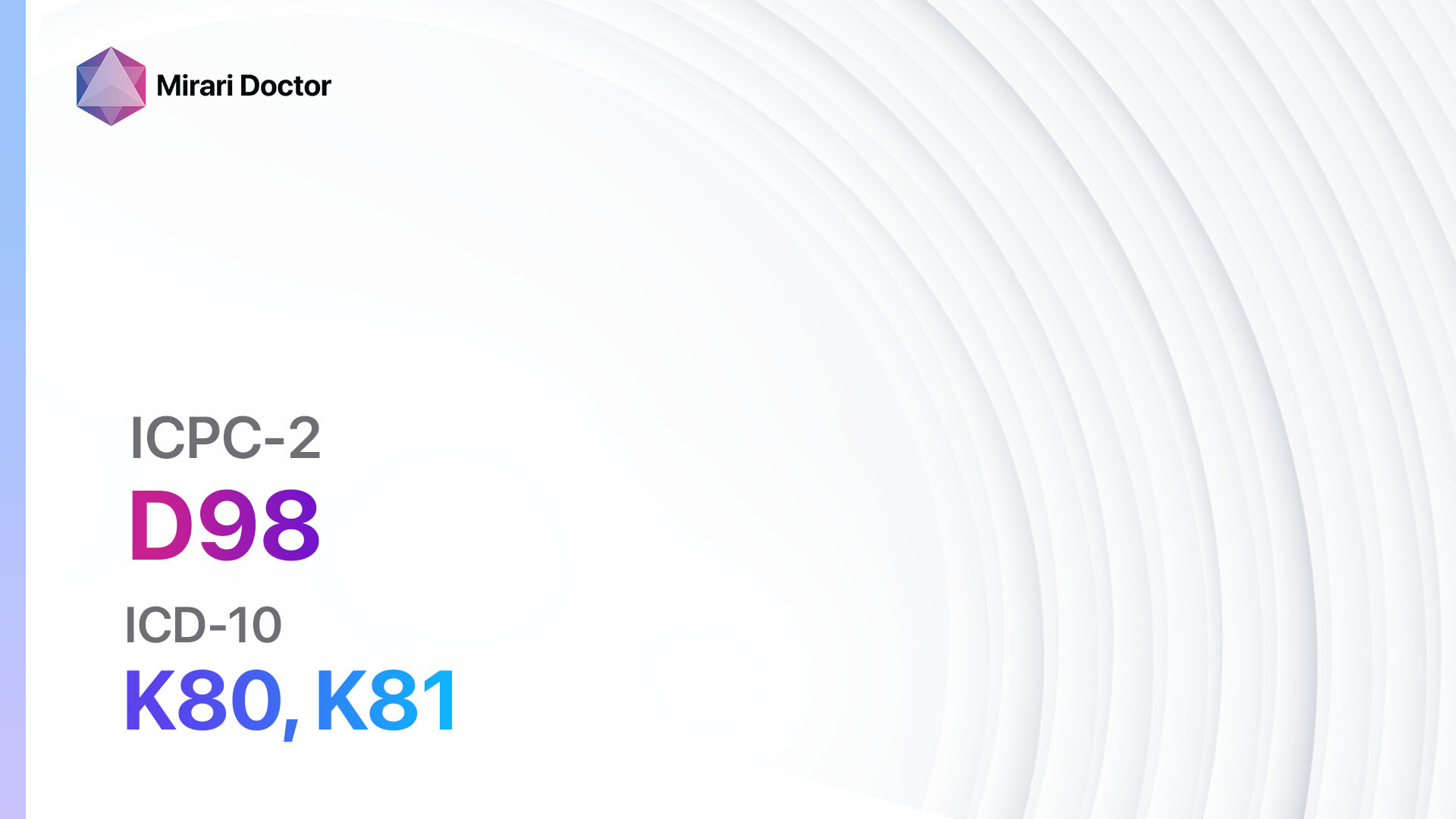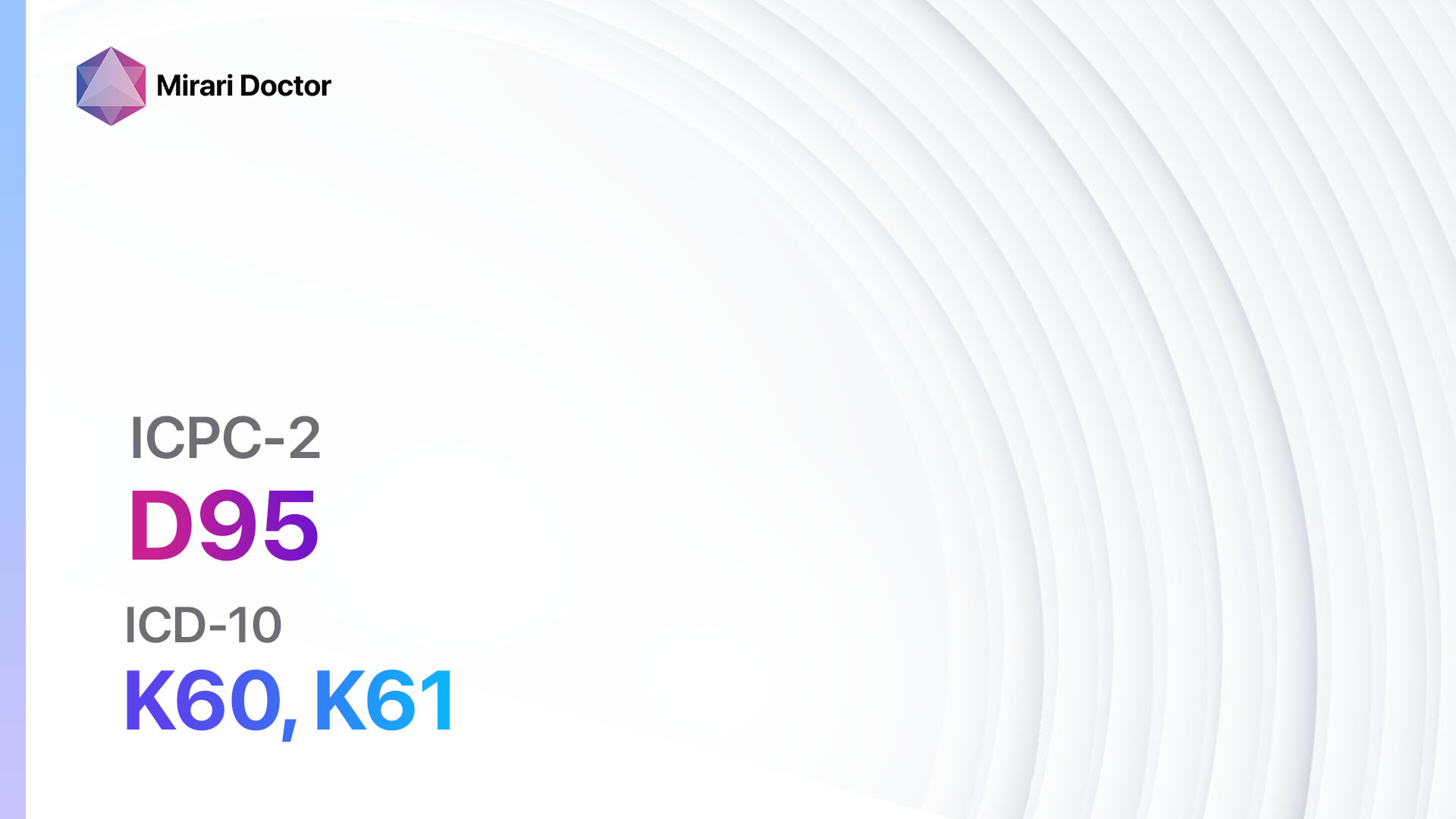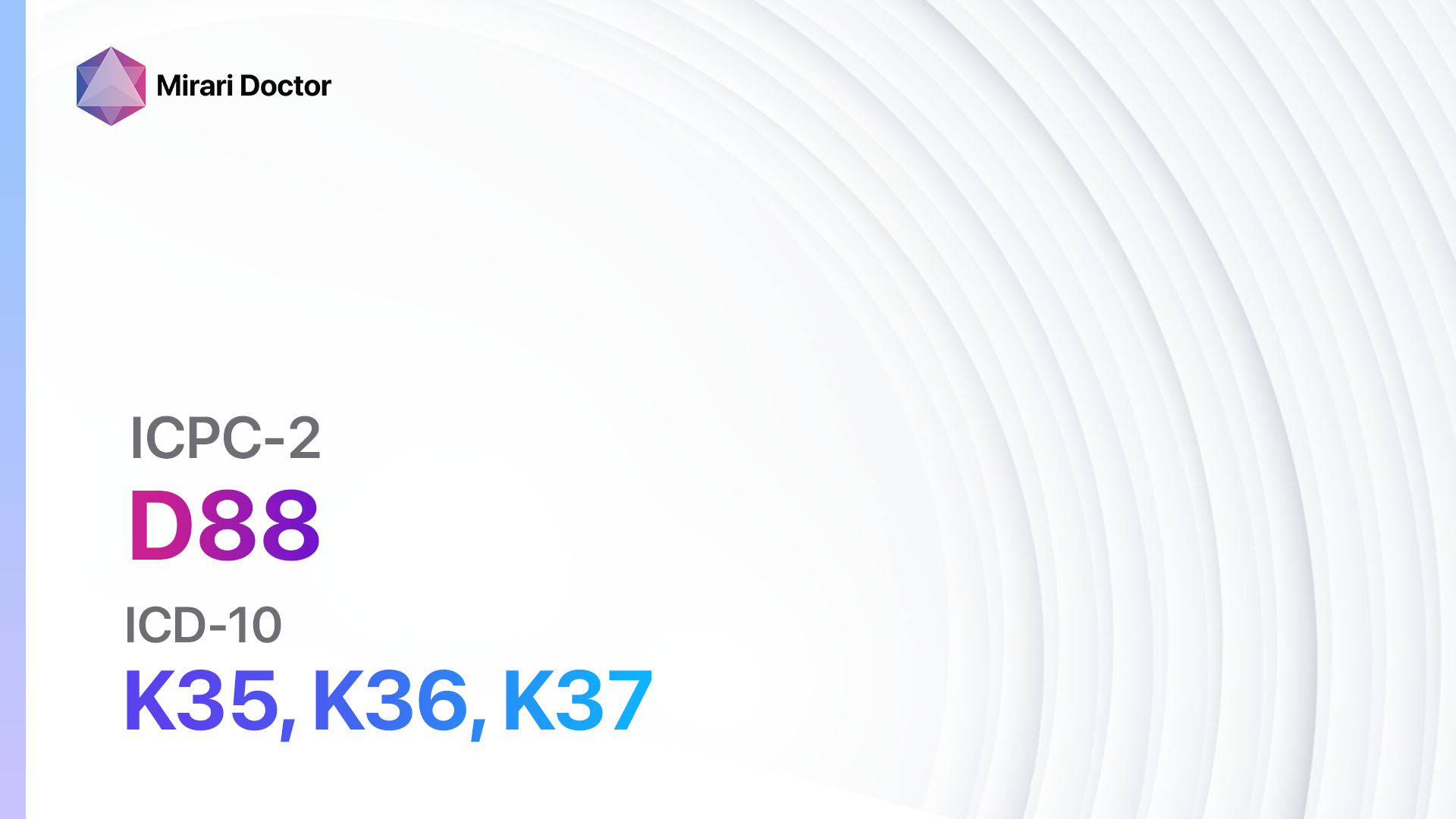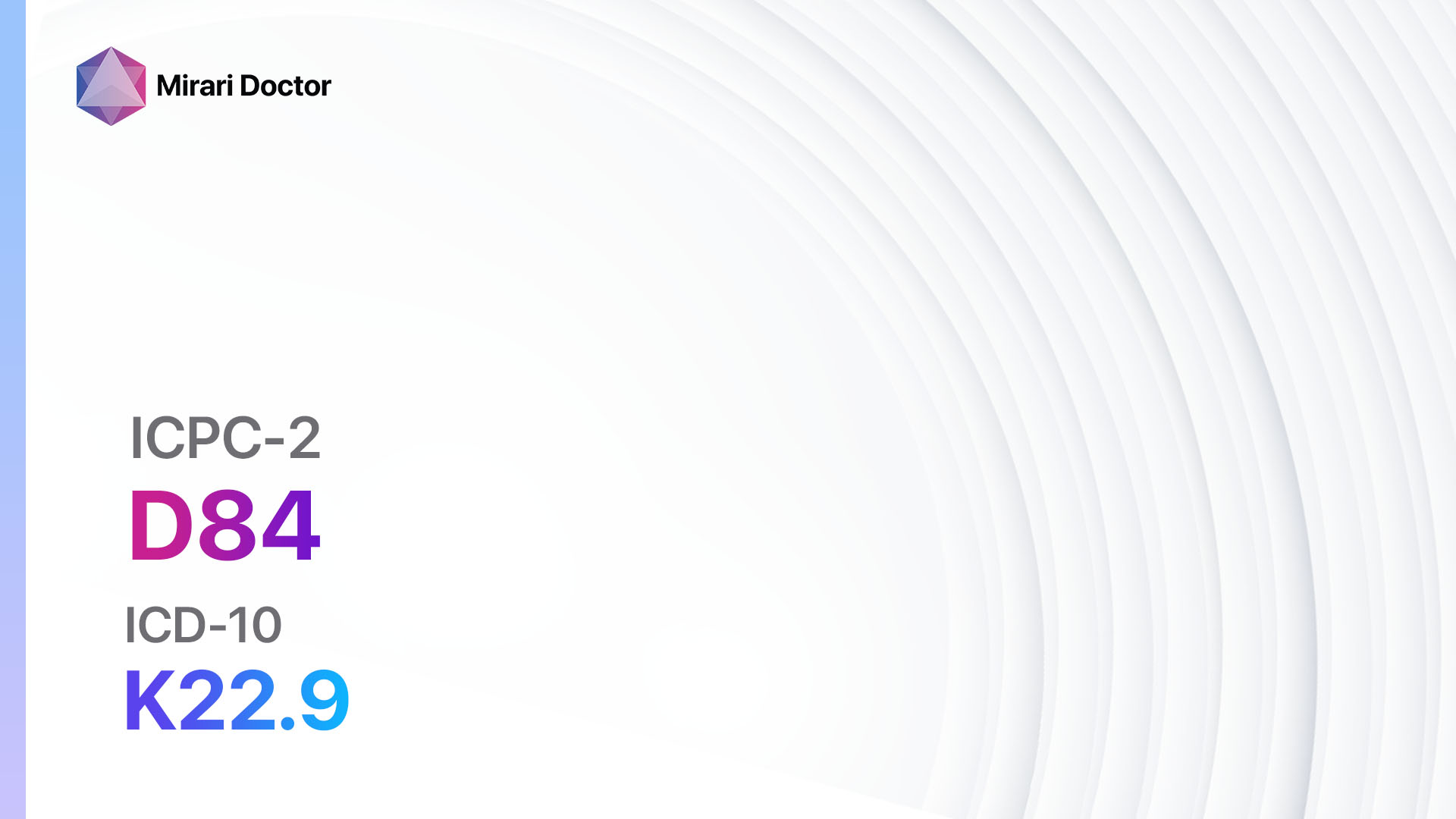
Introduction
Diverticular disease refers to the presence of small pouches, called diverticula, that form in the lining of the digestive system, most commonly in the colon. These pouches can become inflamed or infected, leading to a condition known as diverticulitis[1]. The aim of this guide is to provide a comprehensive overview of diverticular disease, including its symptoms, causes, diagnostic steps, possible interventions, and lifestyle interventions.
Codes
Symptoms
- Abdominal pain: Cramping or constant pain, usually on the left side of the abdomen[4].
- Changes in bowel habits: Constipation or diarrhea, sometimes alternating between the two[5].
- Bloating and gas: Feeling of fullness or excessive gas[6].
- Rectal bleeding: Bright red blood in the stool or on toilet paper[7].
- Fever: Low-grade fever may be present during diverticulitis[8].
Causes
- Weak spots in the colon wall: Diverticula form when weak spots in the colon wall give way under pressure[9].
- Increased pressure in the colon: Factors such as constipation, straining during bowel movements, and a low-fiber diet can contribute to increased pressure in the colon[10].
Diagnostic Steps
Medical History
- Gather information about the patient’s symptoms, including the duration, severity, and frequency.
- Assess risk factors such as age, obesity, smoking, and a low-fiber diet.
- Inquire about any previous episodes of diverticulitis or other gastrointestinal conditions.
Physical Examination
- Perform a thorough abdominal examination to assess for tenderness, bloating, or palpable masses.
- Check for signs of infection, such as fever or elevated heart rate.
- Evaluate for signs of complications, such as peritonitis or abscess formation.
Laboratory Tests
- Complete blood count (CBC): Assess for elevated white blood cell count, which may indicate infection.
- C-reactive protein (CRP): Elevated levels may suggest inflammation.
- Urinalysis: Rule out urinary tract infection as a cause of abdominal pain.
- Stool culture: Detect any bacterial infection that may be contributing to symptoms.
Diagnostic Imaging
- Abdominal X-ray: Evaluate for signs of bowel obstruction or perforation.
- Computed tomography (CT) scan: Provide detailed images of the colon and surrounding structures to assess for diverticula, inflammation, or complications.
- Barium enema: Rarely used, but can help visualize the colon and detect diverticula.
Other Tests
- Colonoscopy: Recommended for patients over the age of 50 or those with concerning symptoms to rule out other conditions and assess the extent of diverticula.
- Flexible sigmoidoscopy: Similar to colonoscopy but focuses on the lower part of the colon.
- Magnetic resonance imaging (MRI): May be used in specific cases to evaluate complications or assess the extent of disease.
Follow-up and Patient Education
- Schedule follow-up appointments to monitor symptoms and assess response to treatment.
- Provide education on dietary modifications, including a high-fiber diet and adequate fluid intake.
- Discuss the importance of regular exercise and weight management.
- Address any concerns or questions the patient may have.
Possible Interventions
Traditional Interventions
Medications:
Top 5 drugs for Diverticular disease:
- Antibiotics (e.g., Ciprofloxacin, Metronidazole):
- Cost: Generic versions can range from $10 to $50 for a course of treatment.
- Contraindications: Hypersensitivity to the medication.
- Side effects: Nausea, diarrhea, abdominal pain.
- Severe side effects: Allergic reactions, tendon rupture.
- Drug interactions: Warfarin, certain antacids.
- Warning: Finish the full course of antibiotics as prescribed.
- Pain relievers (e.g., Acetaminophen, Nonsteroidal anti-inflammatory drugs (NSAIDs)):
- Cost: Generic versions can range from $5 to $20 per month.
- Contraindications: Active peptic ulcer disease, kidney disease.
- Side effects: Upset stomach, liver damage (with prolonged use of NSAIDs).
- Severe side effects: Gastrointestinal bleeding, kidney failure.
- Drug interactions: Warfarin, certain blood pressure medications.
- Warning: Avoid prolonged use of NSAIDs and follow recommended dosages.
- Bulk-forming laxatives (e.g., Psyllium, Methylcellulose):
- Cost: Generic versions can range from $10 to $30 per month.
- Contraindications: Intestinal obstruction, difficulty swallowing.
- Side effects: Bloating, gas, abdominal cramps.
- Severe side effects: Allergic reactions.
- Drug interactions: Other medications taken within 2 hours.
- Warning: Take with plenty of water and follow package instructions.
- Antispasmodics (e.g., Dicyclomine, Hyoscyamine):
- Cost: Generic versions can range from $10 to $30 per month.
- Contraindications: Glaucoma, urinary retention.
- Side effects: Dry mouth, blurred vision, constipation.
- Severe side effects: Increased heart rate, confusion.
- Drug interactions: Other medications with anticholinergic effects.
- Warning: Avoid alcohol and activities requiring mental alertness.
- Probiotics (e.g., Lactobacillus, Bifidobacterium):
- Cost: Generic versions can range from $10 to $30 per month.
- Contraindications: None reported.
- Side effects: Gas, bloating, diarrhea (rare).
- Severe side effects: None reported.
- Drug interactions: None reported.
- Warning: Choose a reputable brand and follow package instructions.
Alternative Drugs:
- Rifaximin: An antibiotic used specifically for the treatment of diverticulitis.
- Mebeverine: An antispasmodic agent used to relieve abdominal pain and cramping.
- Peppermint oil: A natural remedy that may help alleviate symptoms of bloating and gas.
- Digestive enzymes: Supplements that aid in the digestion of food and may help reduce symptoms.
- Prokinetic agents: Medications that improve gastrointestinal motility and may help with symptoms of constipation.
Surgical Procedures:
- Colon resection: In severe cases of diverticulitis or complications, a portion of the colon may need to be surgically removed.
- Cost: $20,000 to $50,000.
- Contraindications: High surgical risk, advanced age, severe comorbidities.
- Side effects: Pain, infection, bleeding, bowel obstruction.
- Severe side effects: Anastomotic leak, bowel perforation.
- Drug interactions: N/A.
- Warning: Follow post-operative care instructions and attend follow-up appointments.
Alternative Interventions
- Probiotics: May help restore the balance of gut bacteria and reduce symptoms. Cost: $10-$30 per month.
- Acupuncture: May help alleviate abdominal pain and improve overall well-being. Cost: $60-$120 per session.
- Herbal supplements: Certain herbs, such as peppermint and chamomile, may have anti-inflammatory properties. Cost: Varies depending on the specific supplement.
- Yoga and relaxation techniques: Can help reduce stress and promote overall digestive health. Cost: Varies depending on the class or instructor.
- Mind-body therapies: Techniques such as meditation and guided imagery may help manage symptoms. Cost: Varies depending on the specific therapy or practitioner.
Lifestyle Interventions
- High-fiber diet: Increase intake of fruits, vegetables, whole grains, and legumes. Cost: Varies depending on food choices.
- Adequate fluid intake: Drink plenty of water and avoid dehydration. Cost: Minimal.
- Regular exercise: Engage in physical activity to promote regular bowel movements and overall health. Cost: Varies depending on the chosen activity.
- Stress management: Practice stress-reducing techniques, such as mindfulness or relaxation exercises. Cost: Minimal.
- Smoking cessation: Quit smoking to improve overall health and reduce the risk of complications. Cost: Varies depending on the chosen method for quitting.
It is important to note that the cost ranges provided are approximate and may vary depending on the location and availability of the interventions.
Mirari Cold Plasma Alternative Intervention
Understanding Mirari Cold Plasma
- Safe and Non-Invasive Treatment: Mirari Cold Plasma is a safe and non-invasive treatment option for various skin conditions. It does not require incisions, minimizing the risk of scarring, bleeding, or tissue damage.
- Efficient Extraction of Foreign Bodies: Mirari Cold Plasma facilitates the removal of foreign bodies from the skin by degrading and dissociating organic matter, allowing easier access and extraction.
- Pain Reduction and Comfort: Mirari Cold Plasma has a local analgesic effect, providing pain relief during the treatment, making it more comfortable for the patient.
- Reduced Risk of Infection: Mirari Cold Plasma has antimicrobial properties, effectively killing bacteria and reducing the risk of infection.
- Accelerated Healing and Minimal Scarring: Mirari Cold Plasma stimulates wound healing and tissue regeneration, reducing healing time and minimizing the formation of scars.
Mirari Cold Plasma Prescription
Video instructions for using Mirari Cold Plasma Device – D92 Diverticular disease (ICD-10:K57)
| Mild | Moderate | Severe |
| Mode setting: 1 (Infection) Location: 3 (Kidney, Liver & Spleen) Morning: 15 minutes, Evening: 15 minutes |
Mode setting: 1 (Infection) Location: 3 (Kidney, Liver & Spleen) Morning: 30 minutes, Lunch: 30 minutes, Evening: 30 minutes |
Mode setting: 1 (Infection) Location: 3 (Kidney, Liver & Spleen) Morning: 30 minutes, Lunch: 30 minutes, Evening: 30 minutes |
| Mode setting: 2 (Wound Healing) Location: 3 (Kidney, Liver & Spleen) Morning: 15 minutes, Evening: 15 minutes |
Mode setting: 2 (Wound Healing) Location: 3 (Kidney, Liver & Spleen) Morning: 30 minutes, Lunch: 30 minutes, Evening: 30 minutes |
Mode setting: 2 (Wound Healing) Location: 3 (Kidney, Liver & Spleen) Morning: 30 minutes, Lunch: 30 minutes, Evening: 30 minutes |
| Mode setting: 3 (Antiviral Therapy) Location: 2 (Prostate & Uterus) Morning: 15 minutes, Evening: 15 minutes |
Mode setting: 3 (Antiviral Therapy) Location: 2 (Prostate & Uterus) Morning: 30 minutes, Lunch: 30 minutes, Evening: 30 minutes |
Mode setting: 3 (Antiviral Therapy) Location: 2 (Prostate & Uterus) Morning: 30 minutes, Lunch: 30 minutes, Evening: 30 minutes |
| Mode setting: 7 (Immunotherapy) Location: 1 (Sacrum) Morning: 15 minutes, Evening: 15 minutes |
Mode setting: 7 (Immunotherapy) Location: 1 (Sacrum) Morning: 30 minutes, Lunch: 30 minutes, Evening: 30 minutes |
Mode setting: 7 (Immunotherapy) Location: 1 (Sacrum) Morning: 30 minutes, Lunch: 30 minutes, Evening: 30 minutes |
| Total Morning: 60 minutes approx. $10 USD, Evening: 60 minutes approx. $10 USD |
Total Morning: 120 minutes approx. $20 USD, Lunch: 120 minutes approx. $20 USD, Evening: 120 minutes approx. $20 USD, |
Total Morning: 120 minutes approx. $20 USD, Lunch: 120 minutes approx. $20 USD, Evening: 120 minutes approx. $20 USD, |
| Usual treatment for 7-60 days approx. $140 USD – $1200 USD | Usual treatment for 6-8 weeks approx. $2,520 USD – $3,360 USD |
Usual treatment for 3-6 months approx. $5,400 USD – $10,800 USD
|
 |
|
Use the Mirari Cold Plasma device to treat Diverticular disease effectively.
WARNING: MIRARI COLD PLASMA IS DESIGNED FOR THE HUMAN BODY WITHOUT ANY ARTIFICIAL OR THIRD PARTY PRODUCTS. USE OF OTHER PRODUCTS IN COMBINATION WITH MIRARI COLD PLASMA MAY CAUSE UNPREDICTABLE EFFECTS, HARM OR INJURY. PLEASE CONSULT A MEDICAL PROFESSIONAL BEFORE COMBINING ANY OTHER PRODUCTS WITH USE OF MIRARI.
Step 1: Cleanse the Skin
- Start by cleaning the affected area of the skin with a gentle cleanser or mild soap and water. Gently pat the area dry with a clean towel.
Step 2: Prepare the Mirari Cold Plasma device
- Ensure that the Mirari Cold Plasma device is fully charged or has fresh batteries as per the manufacturer’s instructions. Make sure the device is clean and in good working condition.
- Switch on the Mirari device using the power button or by following the specific instructions provided with the device.
- Some Mirari devices may have adjustable settings for intensity or treatment duration. Follow the manufacturer’s instructions to select the appropriate settings based on your needs and the recommended guidelines.
Step 3: Apply the Device
- Place the Mirari device in direct contact with the affected area of the skin. Gently glide or hold the device over the skin surface, ensuring even coverage of the area experiencing.
- Slowly move the Mirari device in a circular motion or follow a specific pattern as indicated in the user manual. This helps ensure thorough treatment coverage.
Step 4: Monitor and Assess:
- Keep track of your progress and evaluate the effectiveness of the Mirari device in managing your Diverticular disease. If you have any concerns or notice any adverse reactions, consult with your health care professional.
Note
This guide is for informational purposes only and should not replace the advice of a medical professional. Always consult with your healthcare provider or a qualified medical professional for personal advice, diagnosis, or treatment. Do not solely rely on the information presented here for decisions about your health. Use of this information is at your own risk. The authors of this guide, nor any associated entities or platforms, are not responsible for any potential adverse effects or outcomes based on the content.
Mirari Cold Plasma System Disclaimer
- Purpose: The Mirari Cold Plasma System is a Class 2 medical device designed for use by trained healthcare professionals. It is registered for use in Thailand and Vietnam. It is not intended for use outside of these locations.
- Informational Use: The content and information provided with the device are for educational and informational purposes only. They are not a substitute for professional medical advice or care.
- Variable Outcomes: While the device is approved for specific uses, individual outcomes can differ. We do not assert or guarantee specific medical outcomes.
- Consultation: Prior to utilizing the device or making decisions based on its content, it is essential to consult with a Certified Mirari Tele-Therapist and your medical healthcare provider regarding specific protocols.
- Liability: By using this device, users are acknowledging and accepting all potential risks. Neither the manufacturer nor the distributor will be held accountable for any adverse reactions, injuries, or damages stemming from its use.
- Geographical Availability: This device has received approval for designated purposes by the Thai and Vietnam FDA. As of now, outside of Thailand and Vietnam, the Mirari Cold Plasma System is not available for purchase or use.
References
- Tursi, A. (2016). Diverticulosis today: unfashionable and still under-researched. Therapeutic Advances in Gastroenterology, 9(2), 213-228.
- ICPC-2. (n.d.). D92 Diverticular disease. Retrieved from https://www.icpc-2.info/en/browser/92/D92
- ICD-10 Data. (2021). 2021 ICD-10-CM Diagnosis Code K57: Diverticular disease of intestine. Retrieved from https://www.icd10data.com/ICD10CM/Codes/K00-K95/K55-K64/K57-
- Mayo Clinic. (2021). Diverticulitis – Symptoms and causes. Retrieved from https://www.mayoclinic.org/diseases-conditions/diverticulitis/symptoms-causes/syc-20354758
- Strate, L. L., Morris, A. M. (2019). Epidemiology, Pathophysiology, and Treatment of Diverticulitis. Gastroenterology, 156(5), 1282-1298.e1.
- Böhm, S. K. (2015). Risk Factors for Diverticulosis, Diverticulitis, Diverticular Perforation, and Bleeding: A Plea for More Subtle History Taking. Viszeralmedizin, 31(2), 84-94.
- Wilkins, T., Embry, K., George, R. (2013). Diagnosis and management of acute diverticulitis. American Family Physician, 87(9), 612-620.
- Shahedi, K., Fuller, G., Bolus, R., Cohen, E., Vu, M., Shah, R., Agarwal, N., Kaneshiro, M., Atia, M., Sheen, V., Kurzbard, N., van Oijen, M. G., Yen, L., Hodgkins, P., Erder, M. H., Spiegel, B. (2013). Long-term risk of acute diverticulitis among patients with incidental diverticulosis found during colonoscopy. Clinical Gastroenterology and Hepatology, 11(12), 1609-1613.
- Peery, A. F., Keku, T. O., Martin, C. F., Eluri, S., Runge, T., Galanko, J. A., Sandler, R. S. (2016). Distribution and Characteristics of Colonic Diverticula in a United States Screening Population. Clinical Gastroenterology and Hepatology, 14(7), 980-985.e1.
- Böhm, S. K., Kruis, W. (2014). Lifestyle and other risk factors for diverticulitis. Minerva Gastroenterologica e Dietologica, 60(2), 110-118.
Related articles
Made in USA



























